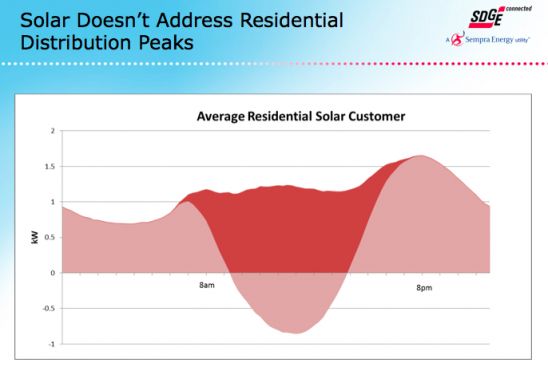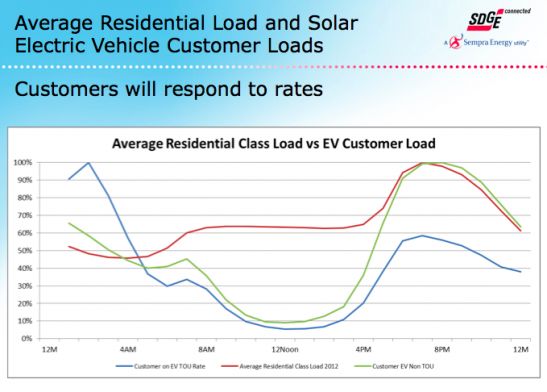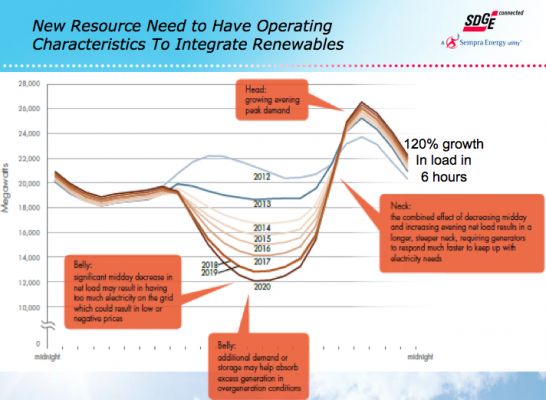James Avery, the VP of Power Supply at San Diego Gas & Electricity, gave a state of the union address on the grid edge at GTM's sold-out Grid Edge Live event in San Diego last week. Avery spoke of the progress his utility is making -- while issuing a warning to other utilities.
"California is a microcosm -- and what we are experiencing now are things you will experience in the future." He added, "The industry is changing and technology is changing, and the way utilities are run and the way they operate is changing"
"Perhaps the biggest challenge in our industry at this very moment is that the way we charge for the services we provide is based upon a model that really predates the dinosaur. It has nothing to do with the way we actually provide services. The way we bill for it is just completely different."
Avery said that the original intent of the two-tier rate structure was "to encourage people to use less energy." But, he said, much of the inefficiency in the residential system is because of the two-tier rate structure that "might have made sense" before distributed generation and electric vehicles, but "doesn't make sense in today's world."
Avery notes that SDG&E's load factor is heading down to about 45 percent, and he said that means that SDG&E must purchase more capacity for every kilowatt-hour that it sells, thereby increasing the cost of power. "Rate structures are making the system less and less efficient," he observed.

The VP said that SDG&E is at nearly 25 percent renewables: "That's an amazing accomplishment, when you think that ten years ago we were less than half of 1 percent. " He said that the utility is reducing GHG emissions, "yet our system load is three to four times what it was before."
What goes into electric rates?
Avery spoke of a system where today, "for every kilowatt-hour we reduce, we only reduce about 15 percent of our costs. That's because the vast majority of our costs are fixed in nature."
"We really need to change the dynamic, the relationship we have with our customers -- and start educating our customers so that they can actually be part of the solution." As an example, he noted that he wishes more customers understood the benefits of turning on air conditioning at noon "when there is an abundance of solar power on the system, so used energy through that time period" puts less stress on the system, rather than coming home from work at 6 p.m. and running AC "full bore through the peak period." (Peak is 2 p.m. to 9 p.m. at SDG&E.)
"That is one of the primary factors that's driving our capacity factor down every year," said Avery. He proposes rate structures to encourage customers to use their own solar to pre-cool their homes in the middle of the day.
The only incentive the customer has today is "to try to manage their way around the utility rates," he said, adding, "Keep in mind these rates were based upon something that has nothing to do with our costs, and we end up in a situation where people are creating...negative impacts on our system."

Solar power and residential peaks
Avery said an average SDG&E residential customer peaks at 8 p.m. "pretty much 365 days a year," as has been the case over the last twenty years.
But according to Avery, the typical San Diego solar rooftop customer has an incentive "to do the wrong thing. Had the same customer tilted his panels 10 degrees further west, that physically moves the solar shape a little bit closer to the peak at the end of the day. Yet there was no incentive for the customer to do that, so consequently we have a situation where the customer has been doing the wrong thing because we've incented him to do the wrong thing and then we in the industry get really pissed off at the customer for doing the wrong thing." He concluded that fixing the rate structure is the only viable solution.

Adding EVs to the mix
According to the utility exec, a typical residential customer equipped with an EV and no incentives as to when it is best to charge the vehicle will "actually exacerbate the problem of the peak." Instead, Avery suggests, a simple time-of-use signal would push the customer to charge at night when "energy is far more abundant."

The duck
Avery contends that solar has created the belly of the so-called duck (as shown in the above graphic), which "creates interesting ramp problems" and "makes it harder and harder to operate the grid." He said that "solar avoids energy but doesn't serve capacity needs on the grid."

Grid Edge Live provided an opportunity for hundreds of executives from the utility, regulatory, generation and renewables industries to gather in a place that is not a PUC auditorium. SDG&E's Avery went on to discuss the cost shift of net energy metering and other topics in his keynote from the event. Watch the full presentation below.




